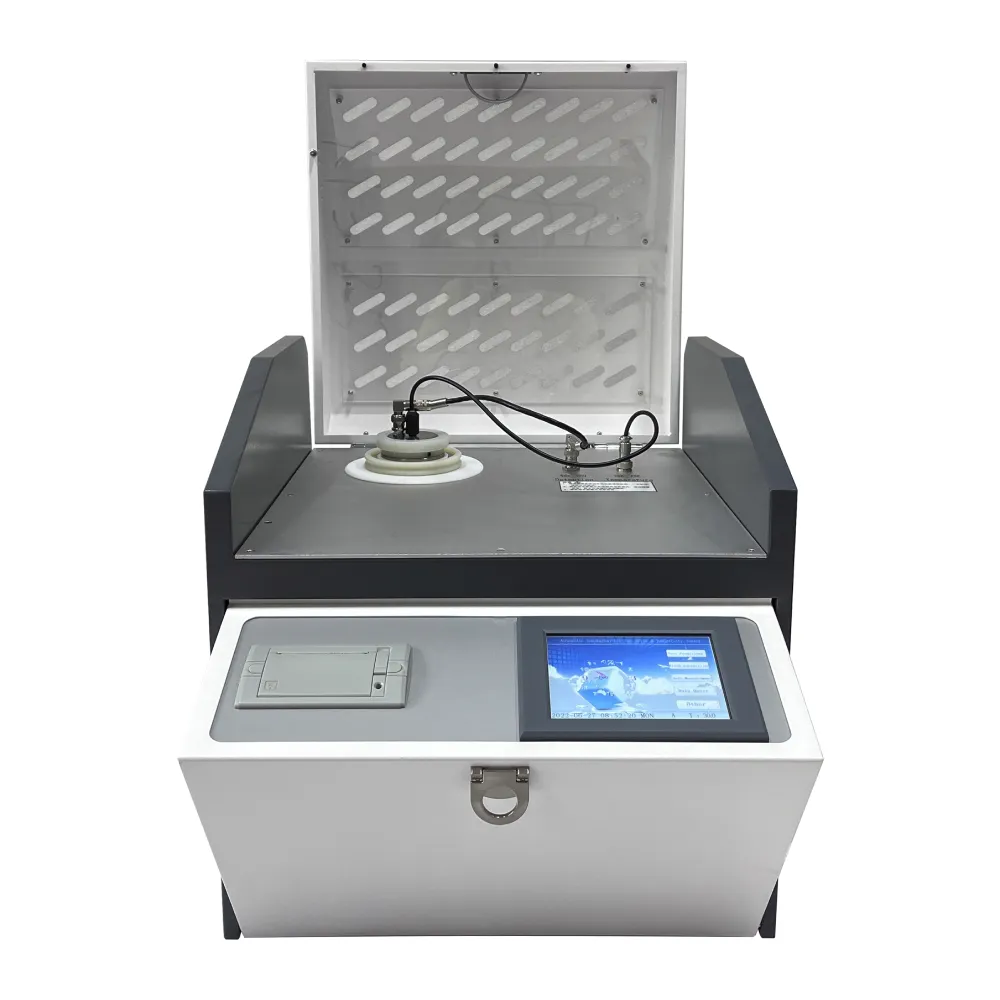 English
English


kinematic viscosity tester
Exploring the Kinematic Viscosity Tester An Essential Tool in Fluid Mechanics
In the field of fluid mechanics, the measurement of a fluid's viscosity is crucial for understanding its behavior under various conditions. Kinematic viscosity, which is the ratio of dynamic viscosity to fluid density, is especially important, as it reflects how fluids flow under the influence of gravity. A kinematic viscosity tester is an essential tool in this regard, widely used in laboratories and industries to ensure the quality of various fluids, including oils, fuels, and chemicals.
Understanding Kinematic Viscosity
Kinematic viscosity is measured in units of square meters per second (m²/s) or in centistokes (cSt), where 1 cSt equals 1 mm²/s. It quantifies the internal resistance of a fluid to flow under gravitational forces. The greater the kinematic viscosity value, the thicker the fluid. For instance, motor oils with higher kinematic viscosity provide better protection for engines, while lower-viscosity fluids are desired for applications requiring better flow characteristics, such as in coating and ink formulations.
The Principle Behind Kinematic Viscosity Testing
Kinematic viscosity testers operate based on the principle of measuring the time taken for a specific volume of fluid to flow through a calibrated capillary tube at a controlled temperature. The setup typically comprises a glass capillary viscometer, a bath for temperature control, and a stopwatch or electronic timer to record the flow time.
When a fluid is placed in the capillary tube, gravity acts on the fluid, causing it to flow. The rate at which the fluid flows through the tube is inversely proportional to its kinematic viscosity. By timing the flow and applying the appropriate fluid density, the kinematic viscosity can be accurately calculated using the equation
\[ \text{Kinematic Viscosity (ν)} = \frac{\text{Dynamic Viscosity (μ)}}{\text{Density (ρ)}} \]
Types of Kinematic Viscosity Testers
kinematic viscosity tester

There are several types of kinematic viscosity testers available, catering to various standards and applications
1. Glass Capillary Viscometers The most traditional method involves a glass capillary tube, where the time it takes for a bubble or liquid to travel a specific distance is recorded. Some popular models include the Ubbelohde and Ostwald viscometers.
2. Automated Viscosity Testers With advancements in technology, automated viscometers have become increasingly popular. These devices offer precise measurements, eliminate human error, and often provide real-time data logging and analysis.
3. Portable Viscosity Meters For field applications, portable viscosity testers allow for quick and reliable viscosity measurements without the need for a full laboratory setup. This is particularly useful for industries like petroleum, where fluid characteristics can change at extraction sites.
Applications of Kinematic Viscosity Testers
Kinematic viscosity testers play a vital role across various industries. In the automotive industry, they are used to evaluate engine oils to ensure they meet required specifications for performance and protection. In the food industry, viscosity testing helps in quality control processes for sauces, syrups, and other viscous products. Furthermore, in the pharmaceutical sector, accurate viscosity measurements are critical for the formulation of liquid medicines to ensure proper dosage and effectiveness.
Conclusion
In summary, the kinematic viscosity tester is an indispensable instrument in the study of fluid mechanics. Its ability to provide precise measurements of a fluid's flow characteristics is essential for product quality assurance in numerous industries. As technology evolves, the design and functionality of these testers continue to improve, promising even greater accuracy and efficiency in fluid viscosity testing. Whether in a laboratory or a field setting, understanding the kinematic viscosity of fluids remains a priority for engineers, scientists, and quality control specialists alike.
-
Differences between open cup flash point tester and closed cup flash point testerNewsOct.31,2024
-
The Reliable Load Tap ChangerNewsOct.23,2024
-
The Essential Guide to Hipot TestersNewsOct.23,2024
-
The Digital Insulation TesterNewsOct.23,2024
-
The Best Earth Loop Impedance Tester for SaleNewsOct.23,2024
-
Tan Delta Tester--The Essential Tool for Electrical Insulation TestingNewsOct.23,2024





